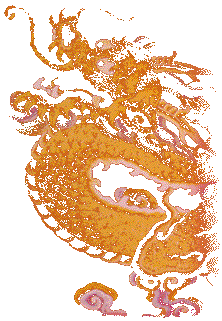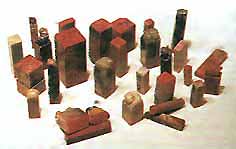
However, from the time after Han
Till Ching
of renaissance gradually emerged along with the trend of archaeology development. Many educated people followed the old style and put seal-prints on their finished works of painting, writing and poetry.
As the art of seal carving became popular, the seal-carvers grouped themselves into different schools according to the style of their work. Among those, there were three most influential to the modern work, namely Chiu Chee Him
Seal-chops are made of jade, ivory, or soft precious stones. The body of the chop can be of different sizes and shapes. The 'head' may be sculpted into shape of animal like fish, goat, lion, dragon, or any other symbolic image. Besides for use on traditional paintings and calligraphy, name seals are nowadays also used as a personal identification in money transactions and other bussiness matters.


